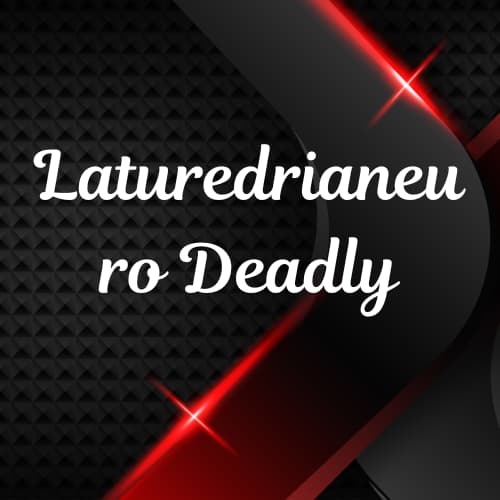The rumor of Laturedrianeuro deadly began when short-form content creators used alarming titles like “New fatal neurovirus found!” while referencing this word.
These posts were never backed by clinical reports or research. The panic grew because:
- The term sounds medical — ending in “neuro.”
- Some sites recycled the same text repeatedly.
- Fear-based headlines increase traffic.
- Viewers shared videos without verifying.
This digital loop created the illusion of danger. Yet, no hospital, university, or health agency ever confirmed such a disease.
What Science Actually Says
Major health databases such as PubMed, CDC, and World Health Organization archives list no record of any illness named Laturedrianeuro.
That means:
- No case studies exist.
- Not mortality reports mention it.
- None vaccines, cures, or medical warnings relate to it.
Essentially, it’s a non-existent medical term — at least in verified literature.
Why People Think It Might Be Deadly
Psychologists describe this reaction as “medical fear amplification.”
When unfamiliar terminology appears online, people subconsciously attach it to danger.
Several factors make that worse:
- Visual triggers: AI-generated brain scans or fake charts add realism.
- Sensational language: Words like “fatal,” “outbreak,” and “neural decay” catch attention.
- Group sharing: Seeing multiple posts creates false confirmation.
- Search engine echo: Algorithms show similar pages, reinforcing belief.
In short, repetition shapes perception more than truth.
Examining Common Claims
Here’s what various online sources claim about Laturedrianeuro — and what the reality is:
| Online Claim | Reality Check |
| “It kills brain cells within days.” | No laboratory proof. |
| “People died after exposure.” | No recorded cases. |
| “It spreads like a virus.” | Not recognized as infectious. |
| “Only young adults get it.” | No demographics exist. |
| “Doctors hide the truth.” | Baseless conspiracy claim. |
Every line collapses under factual review.
Difference Between Deadly and Disruptive
Even though there’s no proof that Laturedrianeuro kills, some users describe mild cognitive discomfort or fatigue and label it under this term.
Those sensations can come from real conditions like:
- Sleep deprivation
- Anxiety or burnout
- Vitamin deficiency
- Screen overexposure
- Chronic stress
These are disruptive, not deadly. They affect focus and mood but are treatable through lifestyle correction — not by curing a nonexistent disease.
Psychology of Fear-Based Terms
Words that sound scientific create authority automatically.
People associate “neuro” with serious brain conditions, so adding it to a random term triggers concern.
Social scientists have seen similar patterns:
- “Chemtrail sickness”
- “Digital dementia”
- “5G brain syndrome”
Each started online, then faded after scrutiny. Laturedrianeuro follows the same path — a linguistic illusion mistaken for fatal truth.
Possible Misinterpretations Behind the Term
A few writers believe the term could have symbolic rather than medical roots. Possible interpretations include:
- Metaphor for overthinking: “Neuro” may describe mental fatigue from overstimulation.
- AI-generated artifact: Many automated content tools invent pseudo-Latin names.
- Satirical expression: Some communities use it humorously to describe burnout.
That’s the case, labeling it deadly completely misses the original context.
Knowledge of “Deadly” Conditions
To give perspective, here’s how actual deadly neurological disorders differ from fictional ones:
| Real Condition | Cause | Survival Rate | Scientific Evidence |
| Creutzfeldt-Jakob Disease | Prion infection | < 1 year after onset | Peer-reviewed |
| Rabies Encephalitis | Viral infection | < 2 weeks untreated | Confirmed |
| Severe Meningitis | Bacterial infection | Depends on type | Confirmed |
| Laturedrianeuro | Undefined | None recorded | None |
This comparison shows what real medical verification looks like — and why Laturedrianeuro doesn’t fit.

How to Respond to Panic Posts
You come across fear-filled videos or tweets saying Laturedrianeuro kills instantly, follow these steps:
- Pause before reacting emotionally.
- Search reliable sources like WHO or CDC.
- Check timestamps — recycled posts often date back years.
- Report misleading content if it spreads panic.
- Educate calmly — remind others that no official health notice exists.
Rational response defuses online fear faster than argument.
Could It Ever Become a Real Diagnosis?
Medicine evolves constantly, so future discoveries could identify new neural disorders.
If a real condition one day resembles what people now call Laturedrianeuro, scientists will rename and define it properly.
Until that happens, using the current term only confuses communication between patients and professionals.
So far, no laboratory, autopsy, or hospital report has detected anything under that name.
Why Fear Spreads Faster Than Facts
Online information moves at algorithmic speed. Posts that trigger emotion — especially fear — get shared first.
Research in digital psychology shows that:
- People are 70% more likely to share alarming content.
- Corrections receive only 10% of that engagement.
- Each repost reinforces belief subconsciously.
That’s why fictional terms gain power. The brain treats repetition as proof.
What the “Deadly” Label Teaches Us
The Laturedrianeuro phenomenon highlights a broader lesson:
People crave explanations for stress, confusion, or fatigue. When an undefined word appears, it fills that gap.
But attaching the word deadly transforms mild discomfort into imaginary danger.
Recognizing that difference protects mental peace and stops unnecessary worry.
So, is Laturedrianeuro deadly?
No — there is no verified evidence, no patient data, and no research proving any lethal effect. It lives purely in the digital world, shaped by speculation and repetition.
The word mirrors how fear travels online faster than logic.
Treat it as a reminder to question, research, and think calmly before reacting to any headline.
The real threat isn’t a hidden virus — it’s misinformation disguised as discovery.
Stay informed, stay balanced, and remember: clarity is stronger than panic.

